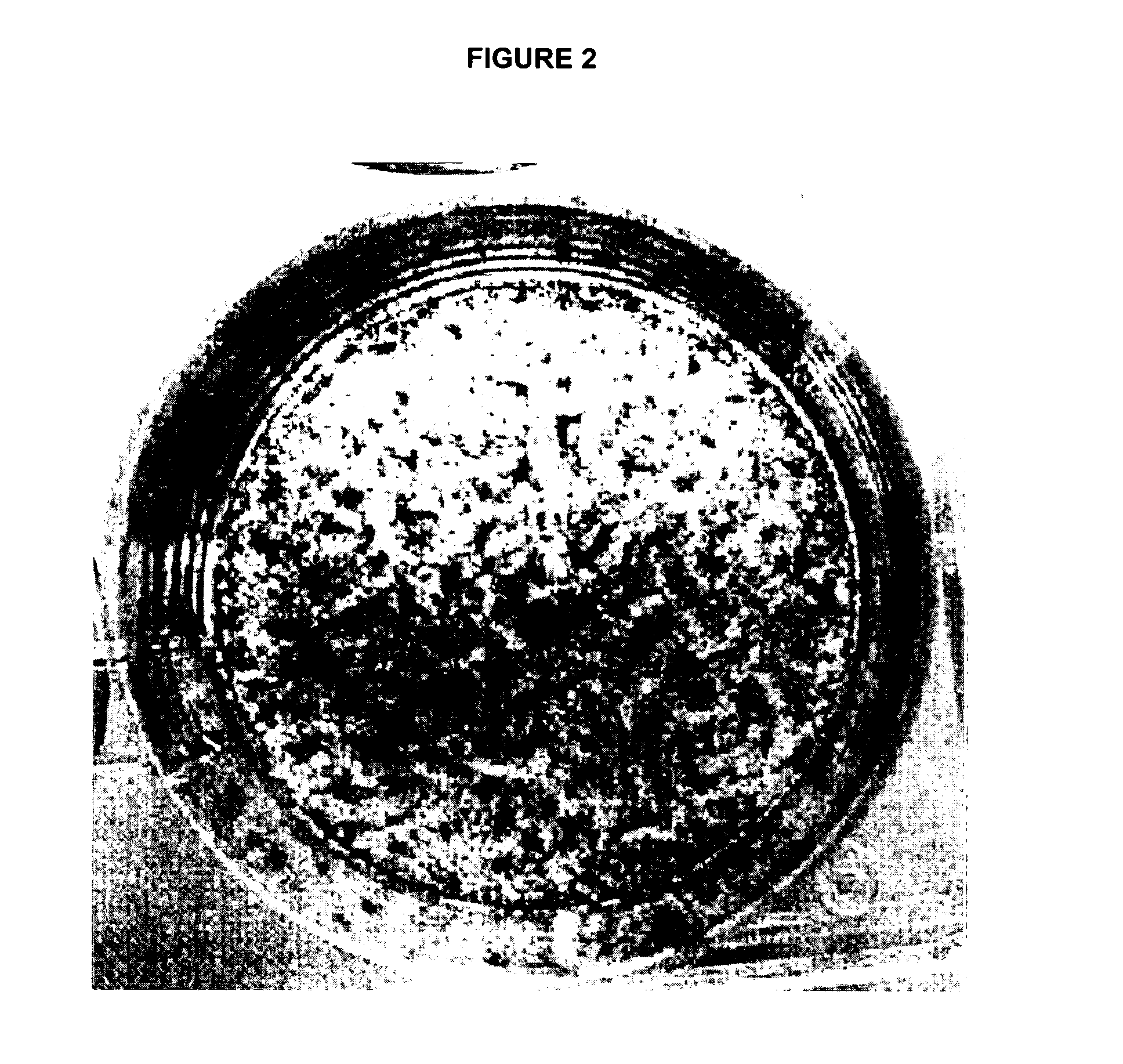Method for osteogenic differentiation of bone marrow stem cells (BMSC) and uses thereof
a bone marrow stem cell and osteogenesis technology, which is applied in the field of osteogenesis differentiation of bone marrow stem cells (bmsc), can solve the problems of not disclosing conditions, reducing the efficiency of bone-forming osteoblasts, and a large proportion of transplanted stem cells not contributing to the formation of bone tissue, so as to achieve the effect of high expansion and osteoblast phenotype, less chance of error or contamination, and reduced number of components in a medium
- Summary
- Abstract
- Description
- Claims
- Application Information
AI Technical Summary
Benefits of technology
Problems solved by technology
Method used
Image
Examples
example 1
Method to Differentiate BMSC into Osteoblasts
[0248]30 ml of bone marrow is removed from iliac crest of a human subject and 100 ml of blood is removed from the same subject.
[0249]Plasma is prepared from the blood as usual in the art. More specifically, blood supplied with the anti-coagulant heparin is centrifuged at 2000 rpm, 15 min at 20° C., to remove the cellular components, plasma is recovered, heat inactivated at 56° C. for 50 min, cleared by centrifugation at 3000 rpm, 15 min, filtered through a 0.22 μm sterilisation filter, divided into aliquots and stored at −80° C.
[0250]Mono-nucleated cells are recovered from the bone marrow sample using Ficoll gradient centrifugation, in particular using Ficoll Paque Plus (Amersham Pharmacia) and centrifugation at 1400 rpm (450 g), 30 min at 20° C.
[0251]The cells were recovered, washed in PBS and deposited in culture flasks with medium containing IMDM (clinical grade) serum-free medium (Cambrex), 20% autologous plasma isolated above and 1 n...
example 2
Phenotypic Characterisation of Osteoblasts and Osteoblast-Like Cells Obtained by the Method of Example 1
[0252]After 21 days of culture in the Cell Therapy Unit, the cells are harvested for the injection to the patient and for characterization. 20×106 cells are prepared for the injection. The remaining cells are used for phenotypic characterization:
1. Semi-Quantitative Measurement of Bone Sialoprotein by RT-PCR 2
[0253]1 to 2 106 cells are lyzed in a RNA extraction buffer (RLT buffer, RNeasy kit Qiagen) and stored at −80° C. until processed. Total RNA is extracted from the lysates using the RNeasy kit from Qiagen. One μg of total RNA was reverse transcribed using random hexamers and reverse transcriptase. The first strand cDNA product is subjected to reverse transcription polymerase chain reaction (RT-PCR) using oligonucleotide primer pairs for bone sialoprotein (BSP) and a housekeeping gene, β-actin. The RT-PCR products are analyzed by electrophoresis in a 2% agarose gel and visualiz...
example 3
Transplantation of the Cells of Example 2 to Patients
[0278]In one example, a patient with stage 2 osteonecrosis of the femoral head was treated by osteoblasts implantation into the hip necrotic zone, according to a method previously described by Gangji et al. 2005 (Expert Opin Biol Ther 5(4): 437-42; J Bone Joint Surg Am 87 Suppl 1:106-12)
[0279]At baseline, the patient had a pain score (visual analogue score—VAS) of 38 mm (out of a total score of 100), and hip functional scores of WOMAC at 43 (out of a total score of 96) and of Lesquesne at 11 (out of a total score of 24).
[0280]The patient treated by osteoblast implantation demonstrated a marked improvement in joint symptoms after 3 and 6 months: the VAS score fell to 0 at 3 and 6 months (FIG. 1A), WOMAC fell to 0 at 3 months and at 6 months (FIG. 1B) and the Lequesne index decreased from 11 at baseline to 0 at 3 and at 6 months.
[0281]In another example, a patient with stage 2 osteonecrosis of the femoral head was treated by osteobl...
PUM
| Property | Measurement | Unit |
|---|---|---|
| cell diameter | aaaaa | aaaaa |
| freezing points | aaaaa | aaaaa |
| freezing points | aaaaa | aaaaa |
Abstract
Description
Claims
Application Information
 Login to View More
Login to View More - R&D
- Intellectual Property
- Life Sciences
- Materials
- Tech Scout
- Unparalleled Data Quality
- Higher Quality Content
- 60% Fewer Hallucinations
Browse by: Latest US Patents, China's latest patents, Technical Efficacy Thesaurus, Application Domain, Technology Topic, Popular Technical Reports.
© 2025 PatSnap. All rights reserved.Legal|Privacy policy|Modern Slavery Act Transparency Statement|Sitemap|About US| Contact US: help@patsnap.com



